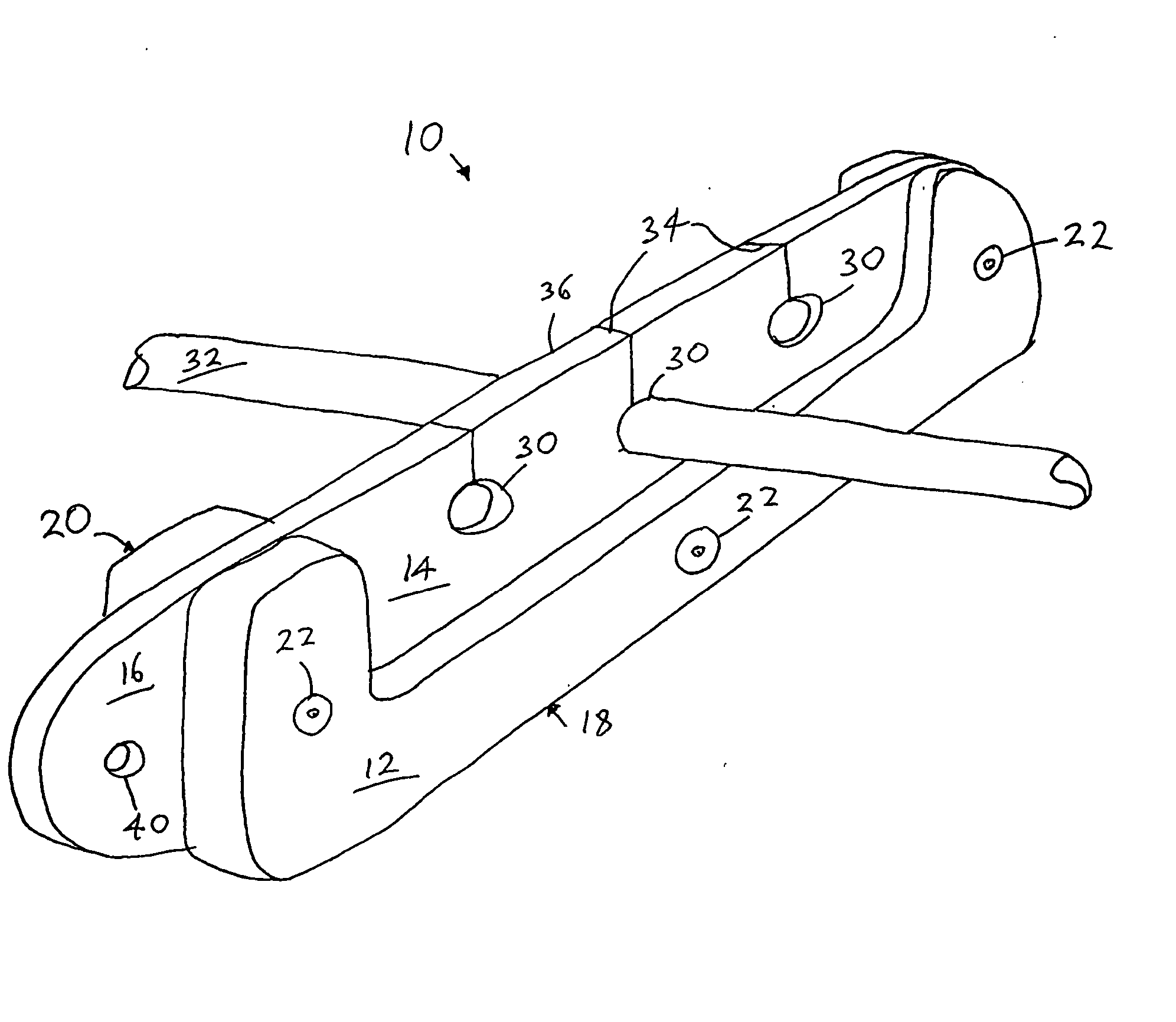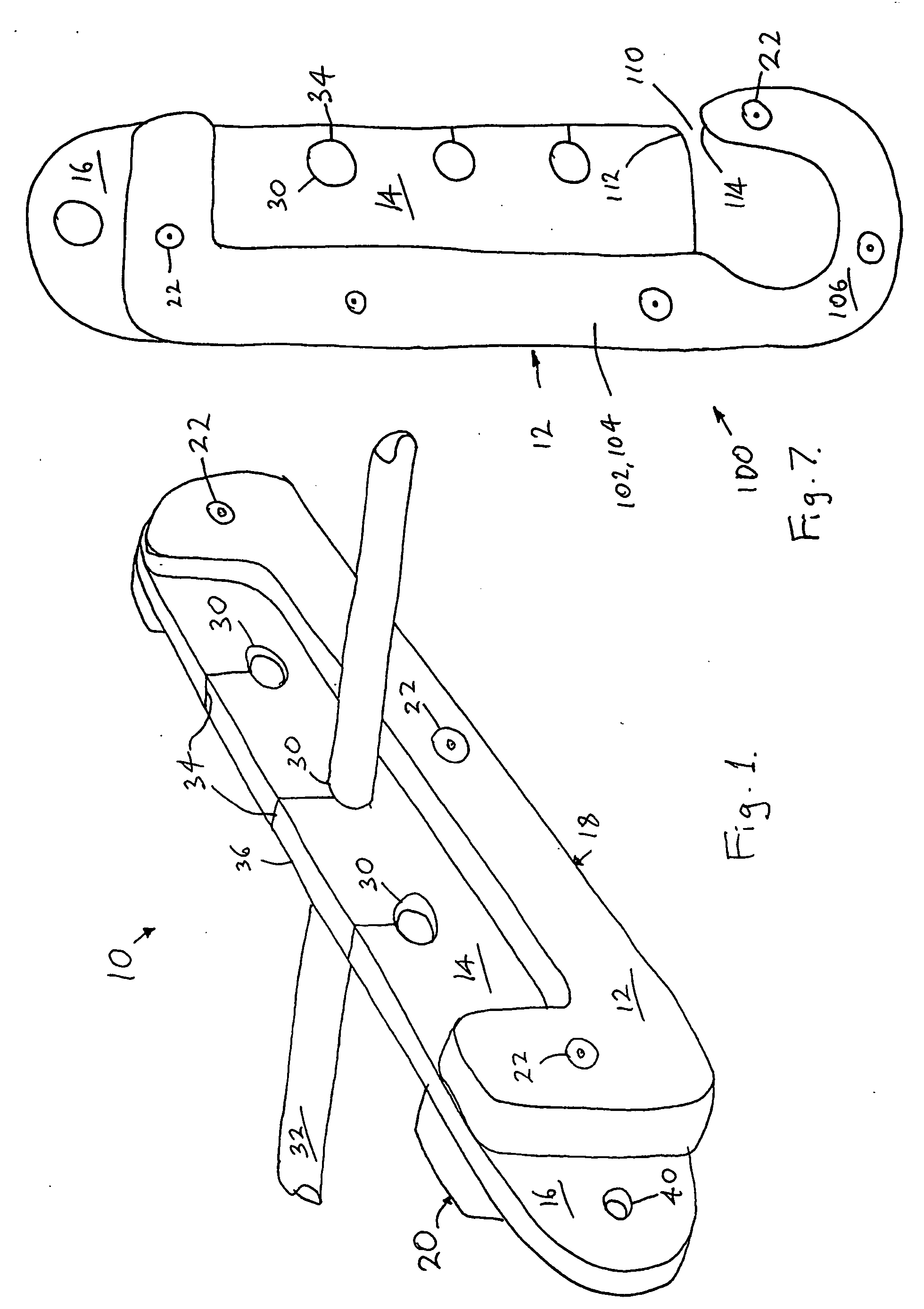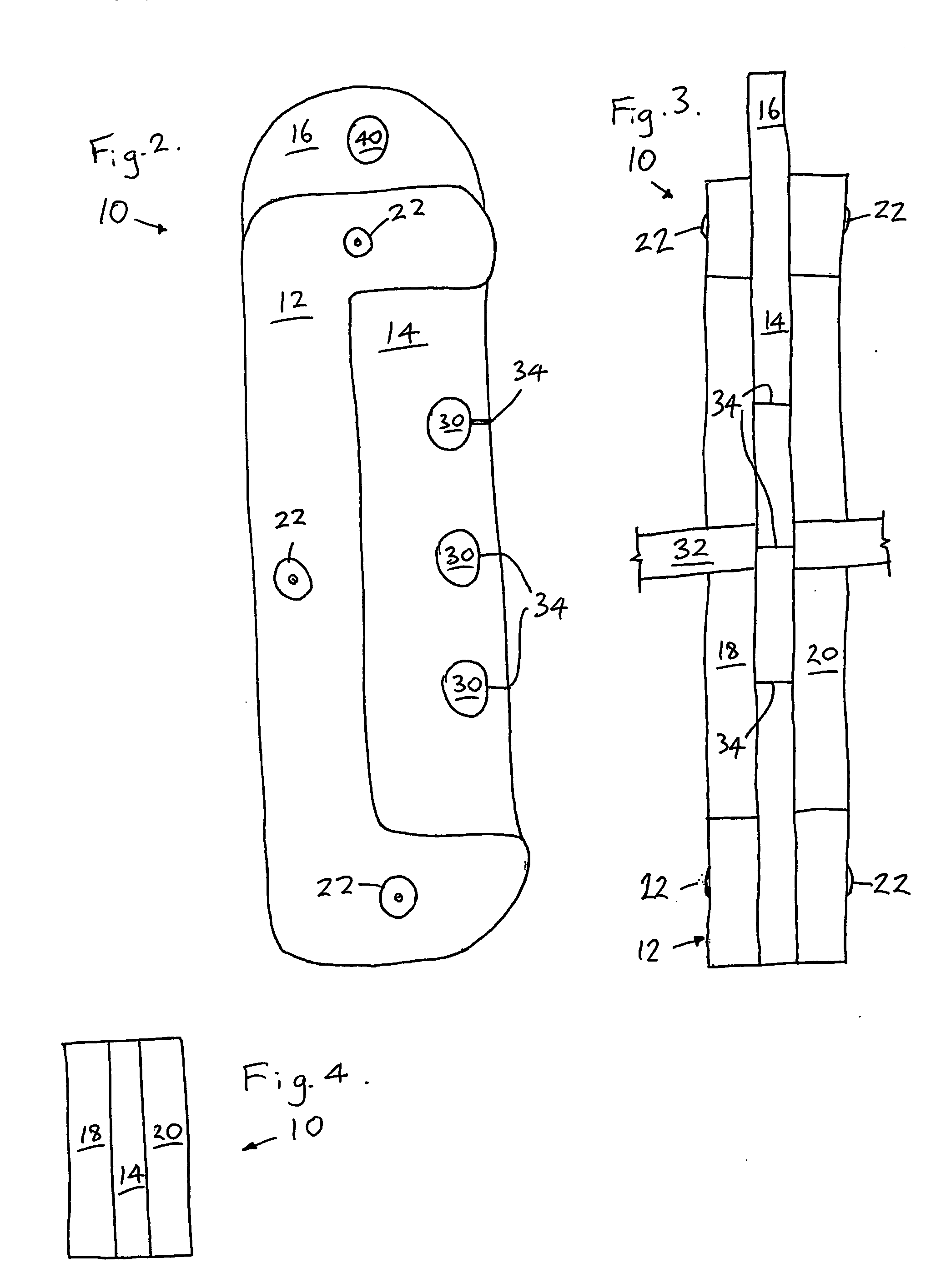Cord retainer
a technology of retainer and cord, which is applied in the direction of flexible pipes, vehicles/pulleys, cables, etc., can solve the problems of electrical lead still in direct contact with metal surfaces, affecting the work efficiency of workers, and causing sagging of cords, etc., to achieve the effect of eliminating sagging
- Summary
- Abstract
- Description
- Claims
- Application Information
AI Technical Summary
Benefits of technology
Problems solved by technology
Method used
Image
Examples
Embodiment Construction
)
[0028] In FIGS. 1 to 4 there is shown an electrical lead retainer 10 in accordance with one aspect of the present invention. The electrical lead retainer 10 includes a body 12, a resilient web 14 depending from the body and a mounting means in the form of a mounting tab 16 in operative association with the body 12.
[0029] The body 12, in the exemplary embodiment, is substantially C-shaped when viewed in plan, substantially flat along its length and of substantially uniform depth. The body is conveniently formed of two halves 18 and 20 both having the aforementioned shape. The two halves 18 and 20 sandwich the web 14 between them and have holes that receive rivets 22, or the like fixings, to fix the two halves 18 and 20 about the web 14. A workable length for the two halves 18 and 20 is about 160 mm, a width of about 50 mm and a thickness of about 10 mm. These dimensions are only to be taken as a guide as to what can work for a conventional 240-volt mains electrical lead having a di...
PUM
 Login to View More
Login to View More Abstract
Description
Claims
Application Information
 Login to View More
Login to View More - R&D
- Intellectual Property
- Life Sciences
- Materials
- Tech Scout
- Unparalleled Data Quality
- Higher Quality Content
- 60% Fewer Hallucinations
Browse by: Latest US Patents, China's latest patents, Technical Efficacy Thesaurus, Application Domain, Technology Topic, Popular Technical Reports.
© 2025 PatSnap. All rights reserved.Legal|Privacy policy|Modern Slavery Act Transparency Statement|Sitemap|About US| Contact US: help@patsnap.com



